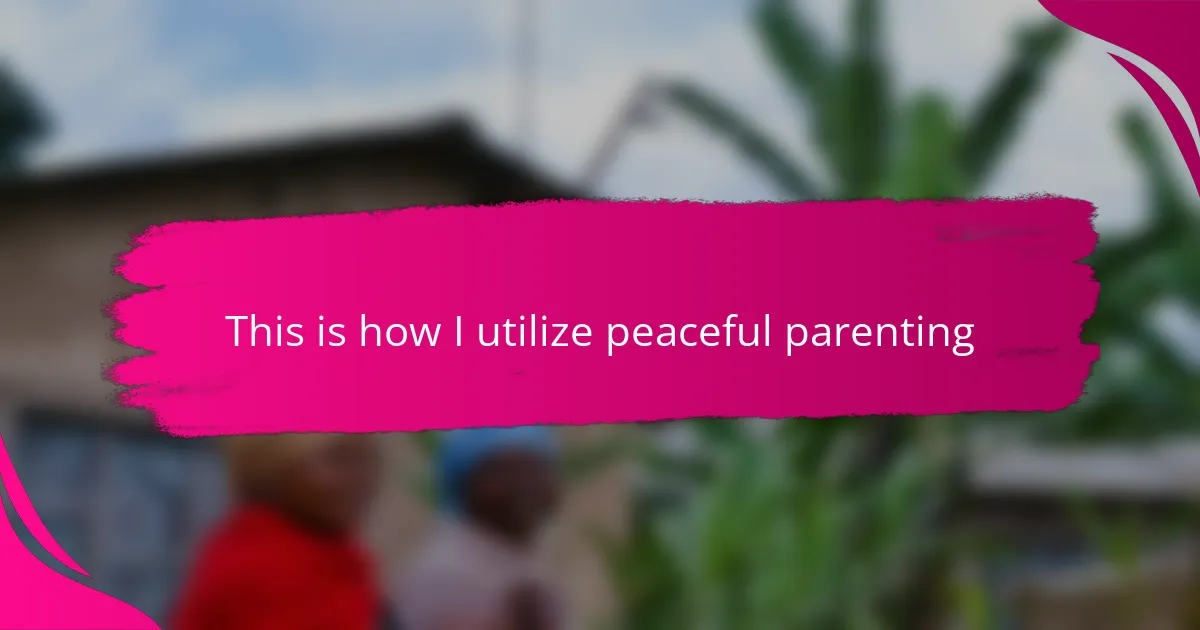Key takeaways
- Peaceful parenting prioritizes empathy and respect, fostering connection through understanding children’s feelings rather than enforcing strict control.
- Active listening and reflective language are essential communication techniques that help validate emotions and deepen parent-child relationships.
- Creating a calm home environment with routines and quiet moments can significantly reduce tension and encourage peaceful conflict resolution.
- Embracing mistakes as growth opportunities rather than failures allows for a more compassionate parenting experience, benefiting both the parent and child.
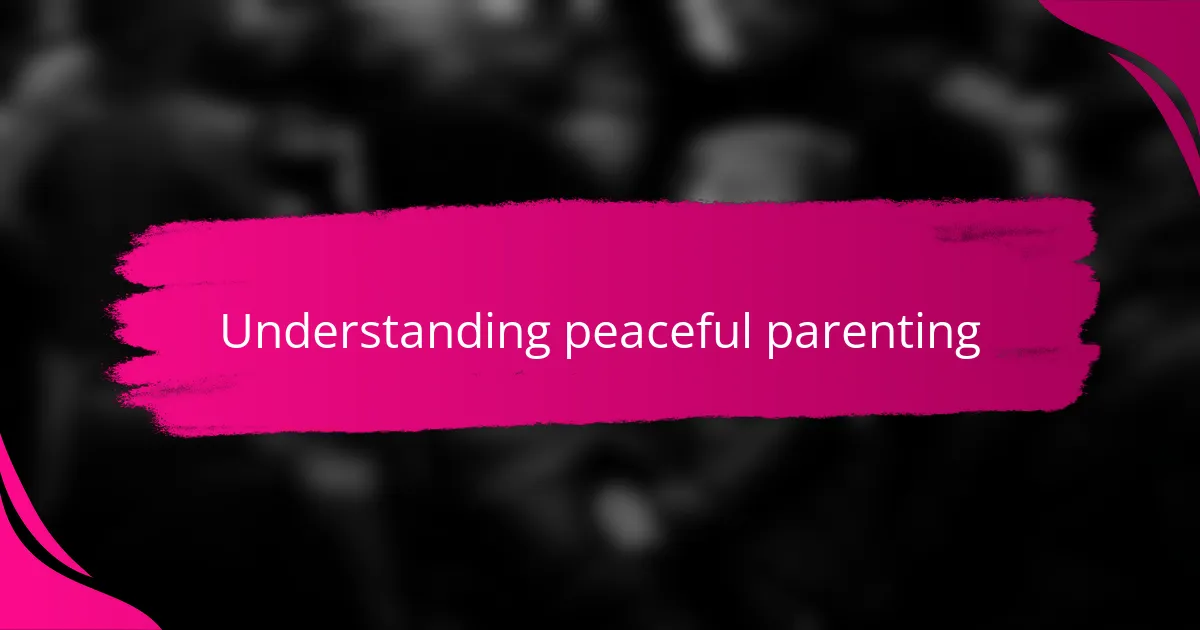
Understanding peaceful parenting
When I first encountered the concept of peaceful parenting, it struck me as a gentle revolution against the harshness I saw in traditional discipline. It made me wonder: what if guiding my child with calm understanding rather than strict control could deepen our connection? This approach emphasizes empathy and respect, treating children as partners in communication rather than subjects to be controlled.
From my experience, peaceful parenting involves more than just avoiding punishment; it requires slowing down to truly listen. Have you ever noticed how frustration often clouds the way we interact with our kids? By consciously choosing patience and validation, I found we could prevent many conflicts before they even started.
Embracing peaceful parenting means accepting that mistakes—and emotions—are part of the process. I’ve learned to welcome moments of tension not as failures but as opportunities for growth, both for my child and myself. This perspective changes how we respond, fostering an environment where everyone feels safe to express themselves honestly.
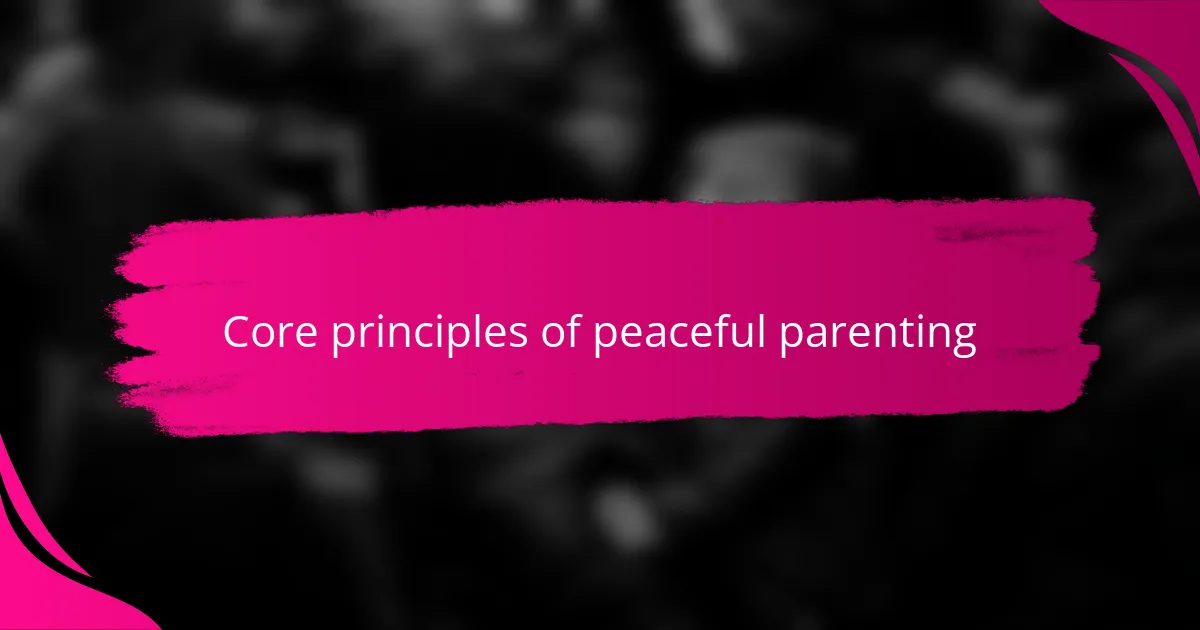
Core principles of peaceful parenting
At the heart of peaceful parenting lies respect—respect for the child’s feelings and experiences. I remember a time when, instead of dismissing my toddler’s tantrum as mere stubbornness, I paused to understand what they were really trying to say. That shift made all the difference; it transformed frustration into connection.
Another core principle is consistency, but not rigidity. I used to think being firm meant controlling every situation, but peaceful parenting taught me that consistent kindness paired with clear boundaries creates a safe space for my child to explore and learn. Have you noticed how children thrive when they know what to expect, yet still feel free to express themselves?
Trusting the process is essential, too. It’s tempting to want quick fixes, but I’ve found that patience and ongoing dialogue build stronger relationships over time. When I remind myself that growth isn’t linear, I become more compassionate—not just toward my child, but toward myself as a parent. That makes all the difference in staying peaceful through the ups and downs.
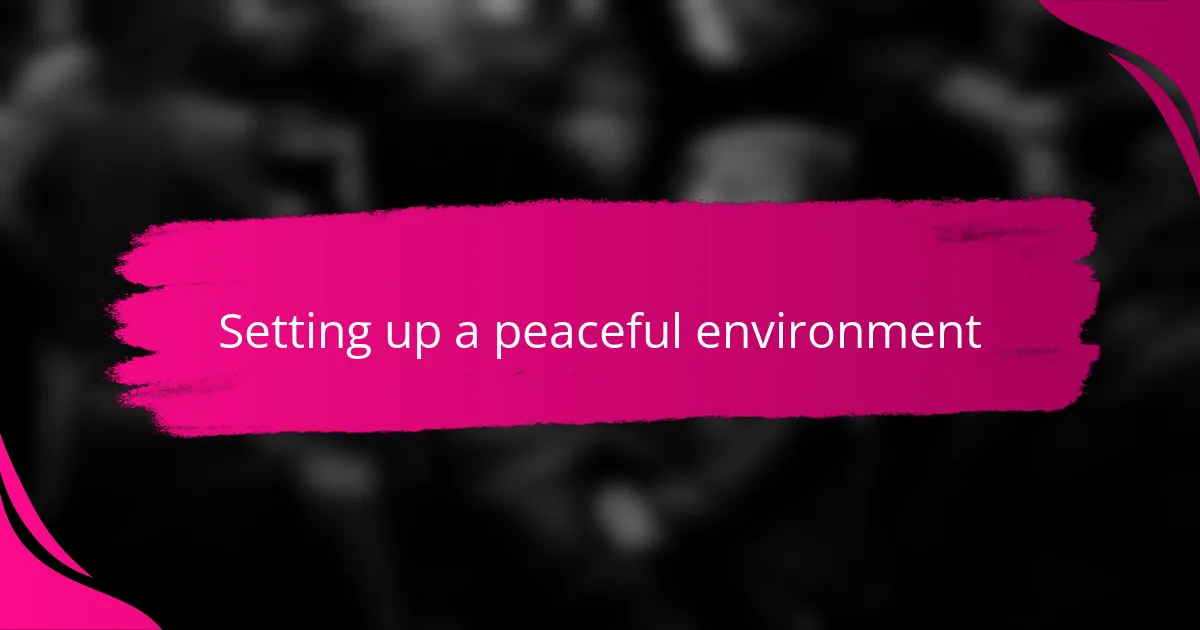
Setting up a peaceful environment
Creating a peaceful environment at home was a game changer for me—it’s amazing how much the physical space influences our moods. I started by decluttering the play areas and adding soft lighting, which instantly made our home feel calmer and more inviting. Have you ever noticed how a messy room can provoke tension without you even realizing it?
I also made a habit of carving out quiet moments during the day, even if just for five minutes, to reset both my energy and my child’s. Those small pockets of calm turned out to be powerful anchors amid the chaos, gently reminding us to breathe and reconnect. It feels like cultivating a peaceful environment is really about creating these little oases of calm within our daily routine.
What surprised me most was how setting such an environment encouraged my child to take the lead in resolving conflicts peacefully. When the space invites serenity, our conversations flow more smoothly, and emotions settle faster. It made me realize that peace isn’t just about what I say; it’s deeply tied to the atmosphere we share every day.
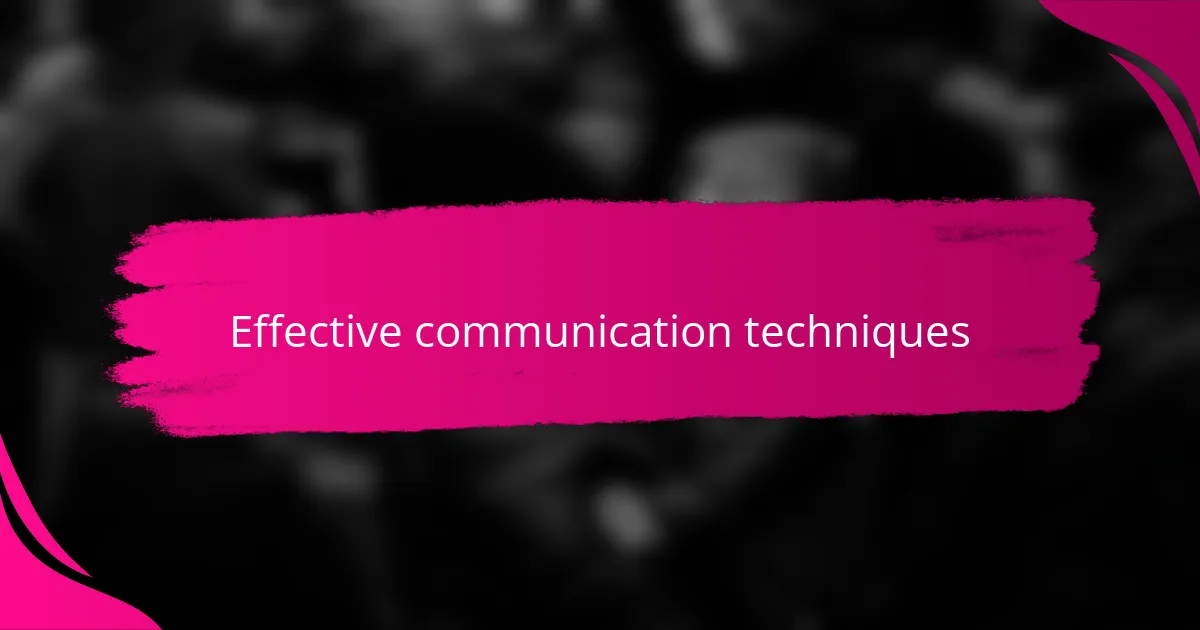
Effective communication techniques
One technique I find essential is active listening. Instead of preparing my response while my child talks, I focus fully on their words and feelings. Have you ever tried really tuning in only to realize how much more your child has to say? That simple shift deepened our connection more than I expected.
I also use reflective language to show I understand and validate emotions. Saying things like, “It sounds like you’re feeling upset because…” helped me transform moments of frustration into chances for empathy. It’s amazing how naming feelings out loud can calm the storm inside both of us.
Lastly, I try to ask open-ended questions rather than yes-or-no ones. Questions like, “What happened next?” or “How did that make you feel?” invite my child to explore their thoughts. This approach makes our talks feel like real conversations, not interrogations, and that’s been a game changer in building trust over time.
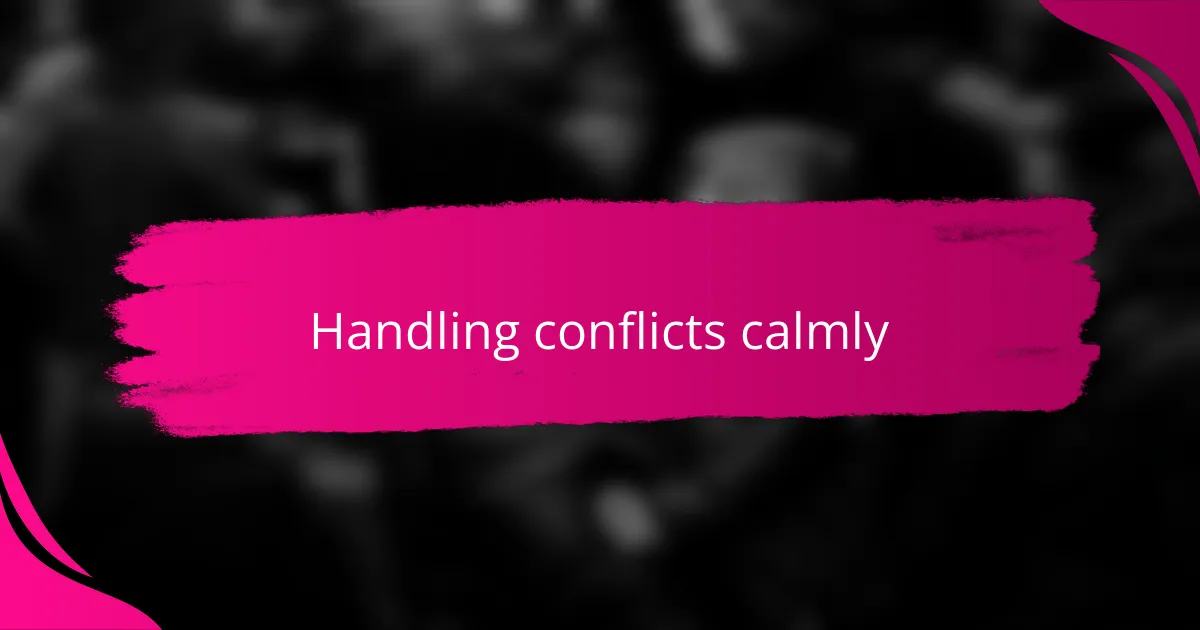
Handling conflicts calmly
When conflicts arise, my first instinct is to take a deep breath before reacting. Have you ever noticed how your tone can escalate a situation without you realizing it? By staying calm, I create a space where my child feels safe enough to express their feelings honestly, which often diffuses tension much faster than raising my voice.
I’ve found that naming emotions during a conflict helps both of us feel understood. For instance, when my child is upset over a denied request, saying, “I see you’re really disappointed right now” can shift the energy from frustration to connection. It’s not about fixing the problem immediately, but about acknowledging the emotion behind it.
Sometimes, walking away briefly to cool down is the best step we can take. I remember a day when both of us were too upset to talk reasonably, so I offered a quiet timeout—not as a punishment, but as a pause to gather ourselves. When we returned, the conversation was calmer, and we solved the issue together. Doesn’t giving space often help clarity and reduce conflict? I’m convinced it does.
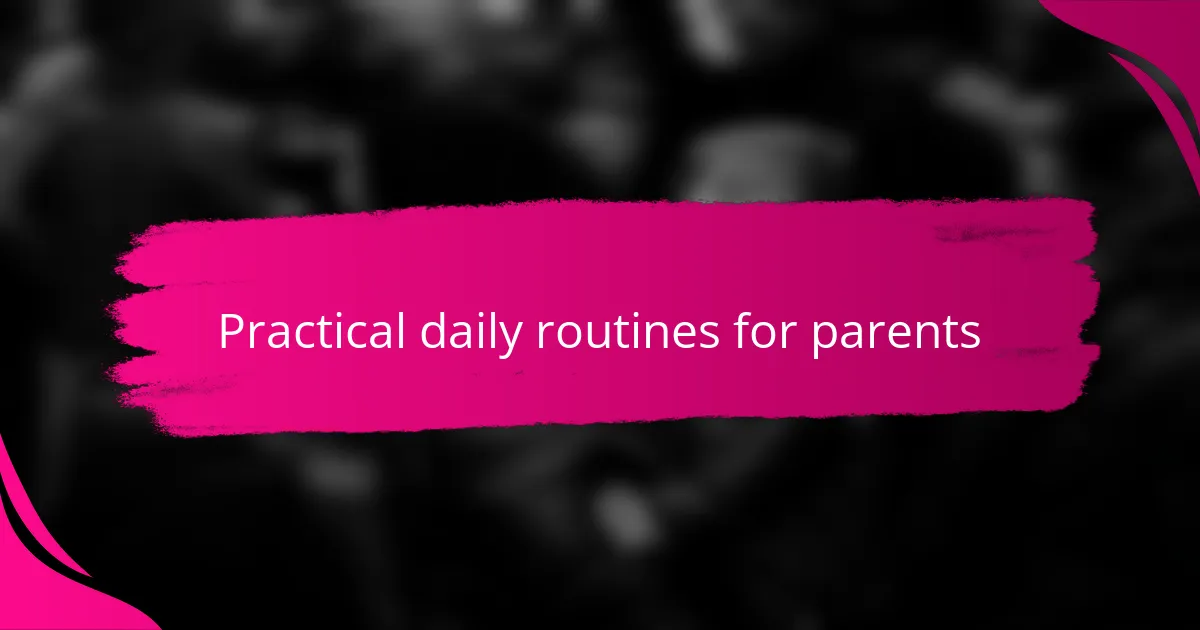
Practical daily routines for parents
One daily routine that transformed our peaceful parenting practice was starting each morning with a quiet check-in. I asked my child simple questions about how they felt or what they looked forward to that day. It surprised me how these brief moments of connection set a tone of calm for the whole day. Have you tried carving out that small space before the rush begins?
Another habit I swear by is a predictable bedtime routine filled with gentle rituals like reading stories or sharing highlights from our day. This consistency doesn’t feel restrictive—it actually creates a comforting rhythm that helps my child feel safe and understood. When I stick to this routine, I notice how easier it is for us both to unwind and connect peacefully.
Lastly, I find weaving in “peace pauses” throughout busy days makes a huge difference. When tensions rise or overwhelm creeps in, I take a moment to breathe deeply with my child or offer a quiet cuddle. These simple, intentional breaks remind me that staying grounded is just as important as addressing challenging moments—do you notice how pausing can shift the energy in your home?
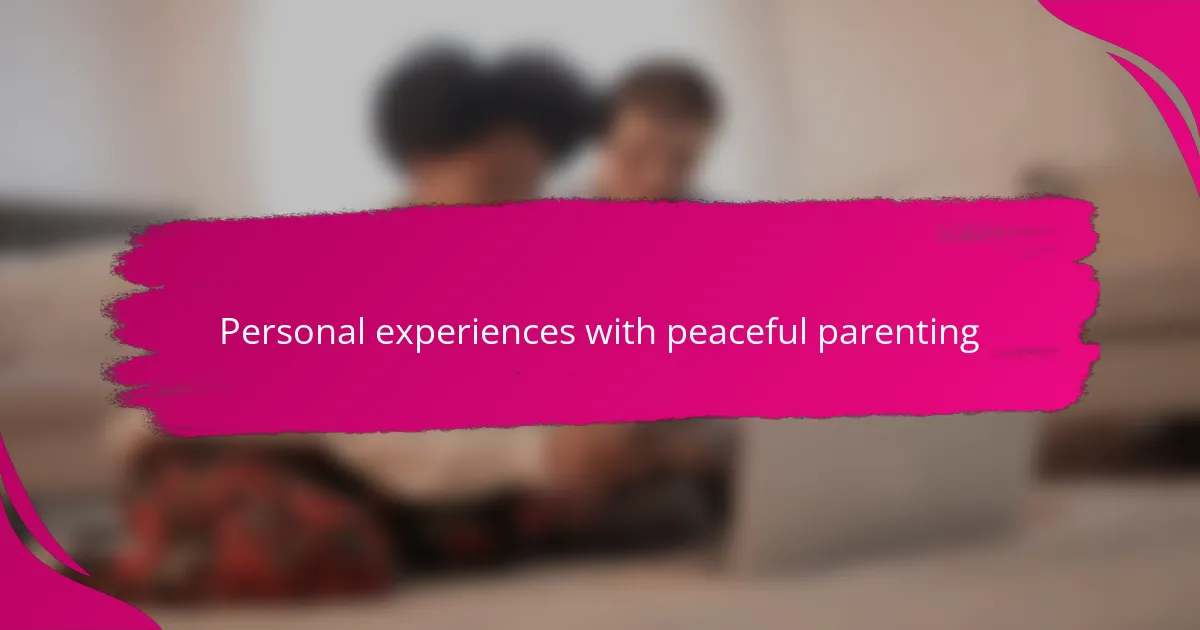
Personal experiences with peaceful parenting
One moment that stands out to me was when my child was having a meltdown over sharing a toy. Instead of reacting with frustration, I knelt down, looked them in the eyes, and calmly validated their feelings. That simple act not only eased the situation but helped me see how powerful peaceful parenting can be in turning chaos into connection.
There was also a phase when I struggled to stay patient during constant negotiations over bedtime. I wondered if I was failing my child by not being more authoritative. But through peaceful parenting, I learned to honor their need for autonomy while gently guiding the boundaries—this balance brought a surprising sense of harmony to our evenings.
Have you ever felt like you’re losing control when emotions run high? I’ve been there countless times. What helped me most was embracing the idea that peaceful parenting isn’t about being perfect but showing up with intention and kindness, even when it’s tough. That mindset shift changed not only how my child responded but how I experienced parenting itself.
